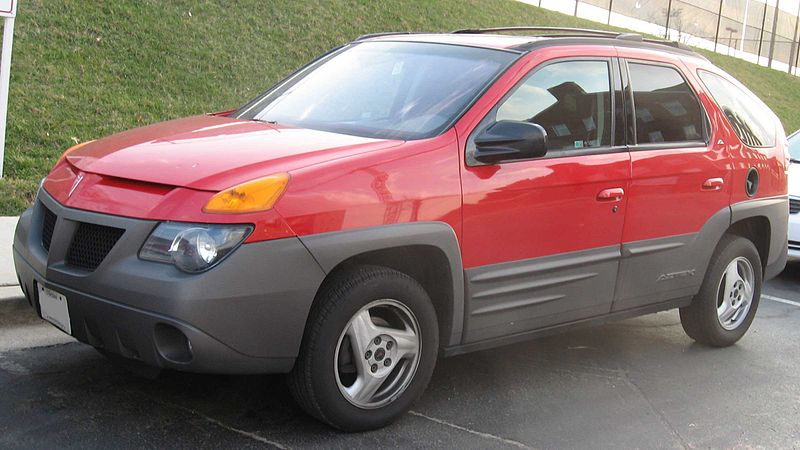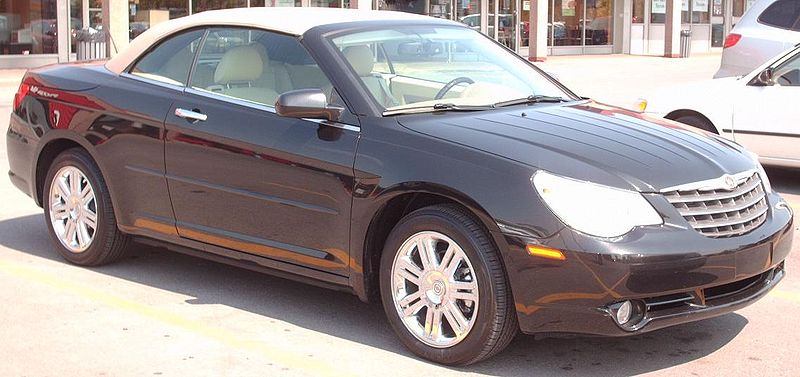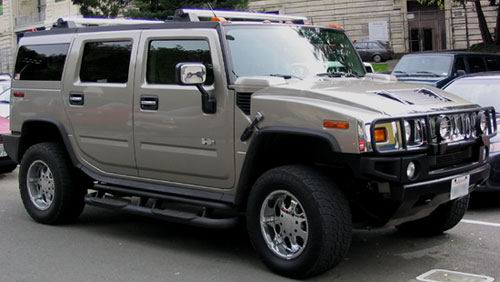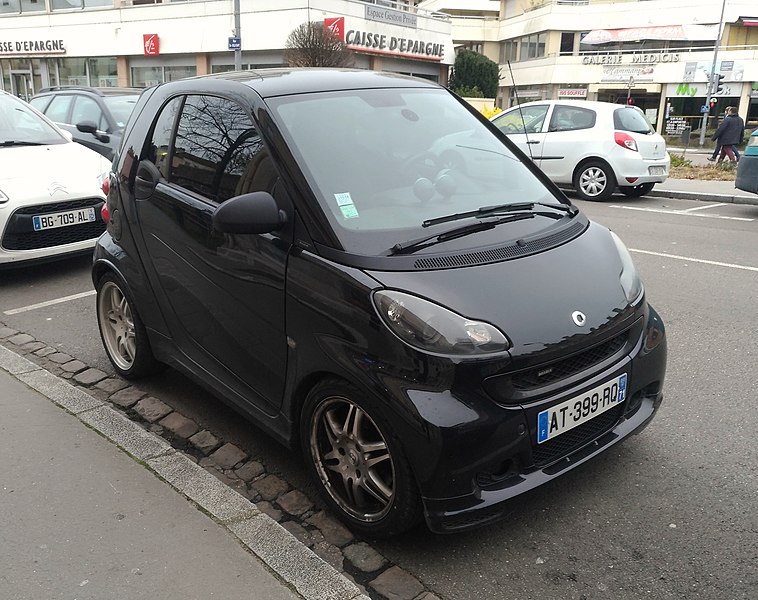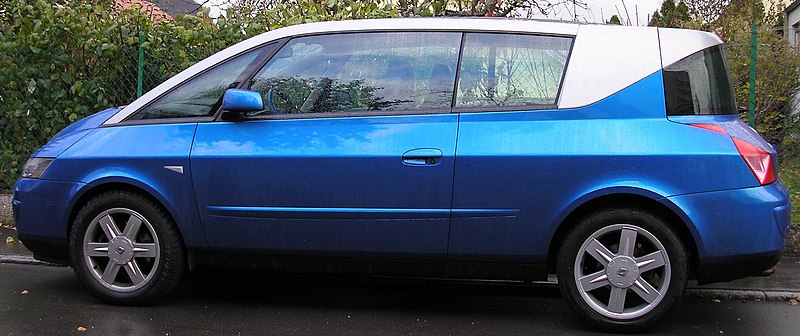As we entered the new millennium, we didn’t always have a smooth ride in terms of car innovations. We might have expected the dawn of the 21st century to leave behind issues like poor engines, cheap interiors, clunky transmissions, and questionable build quality, but sadly, that wasn’t always the case. There were plenty of awful cars made in the aughts, and here are some of the examples:
1. 2001 Pontiac Aztek
The Pontiac Aztek is often remembered as the biggest flop in automotive history and the most disliked car of the 2000s. Launched in 2001, it was intended to be a game-changer, a crossover before the term became mainstream.
However, its polarizing aesthetics, characterized by an awkward, bulky exterior and a plasticky, uninspired interior, led to widespread criticism. But more than the design disaster in its exterior, the car was also notorious for more serious issues like blown gaskets and coolant leaks.
Known for its unconventional looks, the Aztek gained notoriety in the early 2000s, further cemented by its appearance as Walter White’s car in the TV show “Breaking Bad.” This oddball car played a part in the decline of the Pontiac brand, which shut down a few years later.
Despite its curious design, the Aztek did have some redeeming qualities on paper. It came with a reliable V6 engine, delivering a decent 185 horsepower, and was fairly well-equipped for its time. However, its unattractive appearance overshadowed these features. The Aztek’s role in Pontiac’s downfall and its distinctive looks have landed it a spot on many lists of the worst cars ever made.
2. 2003 Saturn Ion
The Saturn Ion was an attempt to rejuvenate Saturn’s line-up, but it fell short in several key areas. The car was plagued by quality issues, an unrefined engine, and a lackluster interior. The Ion’s electric power steering was notorious for its lack of feedback and reliability issues. Additionally, the center-mounted instrument cluster was a peculiar design choice that didn’t resonate well with consumers.
Owners often faced a slew of electrical problems, leading to frequent and costly part replacements. This was a significant inconvenience and financial burden for many. It’s unfortunate because the Ion’s design initially caught the eye of numerous buyers.
3. 2004 Chevrolet SSR
The Chevrolet SSR (Super Sport Roadster) is likely a model Chevrolet wishes to forget. It was their attempt at a retro-styled convertible pickup truck, but they ended up giving it a somewhat toy-like look. It had a quirky design but struggled to find its identity, as it combined elements of a roadster and a pickup. Despite generating buzz at its launch, its sales were disappointing, leading to the closure of its manufacturing plant.
The SSR’s failure can be attributed to its inability to fulfill the roles it promised. As a pickup, it fell short with limited towing capacity and a smaller bed. In the convertible market, it couldn’t match the refinement of luxury brands. While it had a powerful V8, it wasn’t as fast as some street trucks, like the Dodge Ram SRT-10. Price-wise, it was almost on par with these higher-performing models, costing around $42,000.
Despite improvements over its lifespan, including increased power, these changes weren’t enough to attract buyers. The SSR’s lackluster performance means it’s unlikely GM will venture into similar territory again.
4. 2007 Chrysler Sebring
The Chrysler Sebring of 2007 was a disappointment for a brand that once had a reputation for producing elegant vehicles. It was intended to mark Chrysler’s comeback after the success of the 300. However, it ended up being a lackluster offering. Its exterior design was just shy of being plain, but the interior was a different story, filled with hard plastics that seemed low-quality. The V6 engine was rough, comparable to a decades-old tractor’s diesel engine, and the steering was notably unimpressive. In essence, the
Sebring felt more like a fleet car, best suited as a punitive measure for certain professions rather than a vehicle of choice for the average consumer. Later on, the Sebring became notorious for its numerous recalls, with over 200,000 vehicles impacted by seven different recalls, earning it a spot among the most disliked cars of the 2000s.
5. 2001 Jaguar X-Type
The Jaguar X-Type was an ambitious attempt to enter the compact executive car market, but it fell short of expectations. When it debuted in 2001, it initially enjoyed popularity. However, it didn’t take long for its flaws to become evident, marking it as a problematic model.
The most serious issue was with its brake system. According to WhatCar, the Jaguar X-Types were at risk of rolling away because the brake components could shrink as they cooled, presenting a significant safety concern.
Based on a less prestigious Ford platform, the X-Type was criticized for not living up to the Jaguar name in terms of performance and luxury. It struggled to compete with its German rivals and was seen as a diluted version of the esteemed brand.
6. 2002 Hummer H2 and 2006 Hummer H3
The Hummer H2, following in the oversized tire tracks of the H1, epitomized the early-2000s trend of massive SUVs. However, its enormous size, poor fuel efficiency, and extravagant styling made it impractical and environmentally unfriendly. As public opinion shifted towards more economical and environmentally conscious vehicles, the H2 became a symbol of excessive consumption. Despite its iconic status, it fell short of expectations, and AutoTrader dubbed it “the most embarrassing car you can buy.”
As for the Hummer H3, it boasted impressive off-roading capabilities. However, it was let down by several factors, including fuel economy, sluggish acceleration, limited visibility, uncomfortable ride, poor on-road handling, and reliability issues. Additionally, its size, comparable to a Nissan Pathfinder or Toyota 4Runner of that era, led to perceptions of it being an unnecessary excess. The H3 was seen as a vehicle that few people desired or cared about, lacking the unique appeal that at least made the H2 somewhat interesting.
7. 2009 Dodge Caliber
Replacing the popular Neon, the Dodge Caliber was a compact car that failed to live up to its predecessor’s success. Dodge somehow succeeded in making the Caliber even less appealing than a Neon, seemingly showing little concern for the quality of the final product.
The result was a car with about as much refinement as a tin can on wheels. Criticized for its poor interior quality, unrefined ride, and lackluster performance, the Caliber was a step backward for Dodge in the competitive compact car segment. Its CVT transmission was particularly criticized for its uninspiring performance and reliability issues.
To add a touch of humor, there was an SRT4 version of the Caliber, notorious for its torque steer that could humorously, yet hazardously, send you veering toward the nearest tree.
8. 2008 Smart Fortwo
The Smart ForTwo, available since 2007, seems to have missed the mark set by its compact predecessors like the Austin Mini. The Mini demonstrated that a small, economical car could still be practical and enjoyable to drive. It was designed for the narrow streets of Europe, but when it was introduced to the American market, it struggled. Its small size was advantageous for parking but offered little else for the U.S. consumer.
Surprisingly, this tiny car manages only about 33 miles per gallon in the city, and its highway fuel efficiency is hardly worth mentioning. Additionally, driving a ForTwo often leaves one feeling a bit foolish, not to mention its concerning safety ratings. All these factors combine to make the ForTwo a costly choice for the mere convenience of fitting into the smallest parking spaces.
9. 2001 Chrysler PT Cruiser
The Chrysler PT Cruiser, with its unique retro styling, initially garnered significant interest. A classic example of Chrysler trying to capitalize on a successful model. However, as the novelty wore off, its shortcomings became apparent.
Originally designed as a compact, retro-themed minivan, the PT Cruiser had four doors and just about enough space for a family. However, the convertible version took the quirkiness up a notch, losing its practicality but gaining some extra retro flair. It was criticized for its lackluster performance, poor fuel economy, and cramped interior. Despite its distinctive look, the PT Cruiser couldn’t keep up with the competition in the compact segment.
Despite its divisive styling and average build quality, it has a surprisingly large fan base. Those interested in joining this group of enthusiasts can find used models at relatively low prices, thanks to these very factors.
10. 2003 Pontiac Sunfire Coupe
The Pontiac Sunfire Coupe inevitably finds its way onto this list, marking another entry from the now-defunct Pontiac brand. Essentially, it was a Cavalier but with an interior that managed to be even less appealing.
It was mainly notorious for its subpar interior quality. The design and materials used inside the Sunfire were considered a step down even from its Chevrolet Cavalier cousin, which itself was not known for high-end interiors. This made the Sunfire feel cheap and less than inviting. Furthermore, its safety ratings were a significant concern. The car’s performance in crash tests, especially in side-impact scenarios, was poor, indicating a higher risk of injury compared to other vehicles in its class.
Mechanically, the Pontiac Sunfire Coupe was equipped with a four-cylinder engine that, while adequate for basic transportation, left a lot to be desired in terms of performance and reliability. Owners often found themselves questioning the engine’s health, with a frequent need to check oil levels and other maintenance issues.
11. 2002 Renault Avantime
The Renault Avantime stands out as a unique chapter in automotive design. Reliability Index humorously noted, “Only the French would produce something as outlandish as the Avantime.” This model was Renault’s bold attempt to elevate the style of minivans above the typical family vehicle, but it ended up being a mishmash of plastic in an impractically designed two-door coupe.
The Avantime could only seat four people, unlike the seven-seat capacity of its more conventional counterpart, the Espace minivan. While it had decent luggage space for its segment, carrying larger items meant folding down seats, reducing passenger capacity to just two. Essentially, the Avantime was for those who liked minivan aesthetics but didn’t need the functionality. However, this niche appeal led to poor sales, and the Avantime was discontinued after just two years.
Also, the car comes with a notable issue: the Avantime had heavy doors, which were sometimes known to fall off their hinges.
12. 2004 Chrysler Crossfire
The Chrysler Crossfire, while initially turning heads with its distinctive design, ultimately fell short in several key areas. One of the major drawbacks of the Crossfire was its mechanical reliability. Despite its appealing exterior, the car was plagued with issues.
One of the most notable issues with this model is faulty airbags, leading to a significant recall affecting over 700,000 vehicles. This issue was a major blow to the car’s reputation, as safety concerns can overshadow even the most aesthetically pleasing design.
Additionally, the Crossfire struggled to deliver on the performance expected of a sports car. While its looks promised a thrilling driving experience, many owners and critics found that it didn’t quite live up to these expectations. The car was often criticized for its lackluster handling and an engine that, while decent, didn’t provide the exhilarating power that sports car enthusiasts crave.
13. 2002 Renault Vel Satis
Another entry from Renault is the Vel Satis, which was an ambitious attempt by Renault to break into the luxury car market. Unfortunately, it fell short in several critical aspects. While aiming for uniqueness and luxury, the Vel Satis ended up with an unconventional look that didn’t resonate with the traditional luxury car buyer.
Its tall, bulky profile and quirky styling cues diverged significantly from the sleek and elegant designs typically associated with premium vehicles. This unconventional appearance made it a hard sell in a market segment where style and brand prestige hold significant sway.
Mechanically, the Vel Satis also faced challenges. It was plagued by reliability issues. Owners frequently reported problems ranging from electrical glitches to more serious mechanical failures. These reliability concerns, coupled with lackluster driving dynamics, further undermined its appeal.
14. 2003 Rover CityRover
The Rover CityRover stands as a notable example of a failed attempt in the small car market. It was a poorly made car plagued with cheap materials, and its lack of refinement was starkly evident in both its interior and exterior. This subpar construction not only affected the aesthetic appeal of the vehicle but also raised concerns about its durability and long-term reliability.
Also, CityRover’s design lacked the innovation or charm that customers in the compact car segment often look for, making it an unattractive choice compared to its more polished and inventive competitors.
Performance-wise, the CityRover was underwhelming. It was equipped with an engine that, while adequate for city driving, lacked the power and efficiency that modern drivers expect. The driving experience was further marred by poor handling and an unrefined ride, detracting from the comfort and enjoyment that are crucial in this class of cars.
15. 2002 Chevrolet Aveo
Chevrolet Aveo, particularly its early models, struggled to make a positive impression in the competitive subcompact car market. One of the main criticisms of the Aveo was its lackluster build quality. The car’s interior was often described as cheap and uninviting, with extensive use of low-grade plastics and minimal attention to detail. This gave the cabin an overall budget feel that detracted from the driving experience.
Externally, the Aveo’s design was perceived as uninspired, lacking the style and appeal that many consumers seek in smaller cars. In addition to aesthetic shortcomings, the Aveo was also burdened with reliability issues, with owners frequently reporting problems related to its engine and transmission, among other components. It was powered by an engine that provided adequate power for city driving but struggled with highway speeds and acceleration.
Conclusion
The 2000s were certainly an interesting time for the car industry, a mix of bold innovations and some notable stumbles. The cars we’ve talked about, each with their unique quirks and shortcomings, remind us that designing a great car is no easy feat. They illustrate the fine line car makers tread between being inventive, practical, and in tune with what drivers want in an industry that’s always changing.

